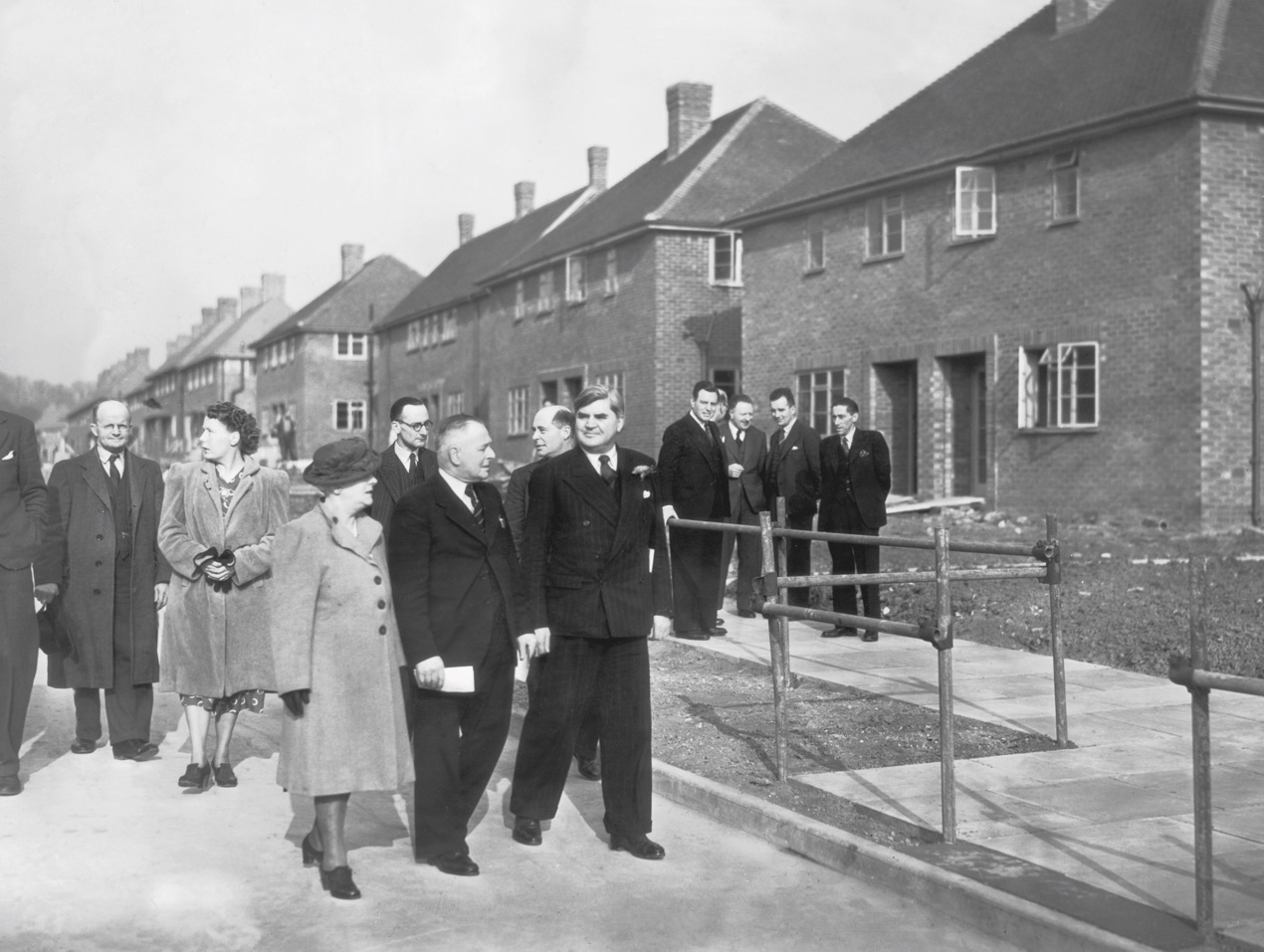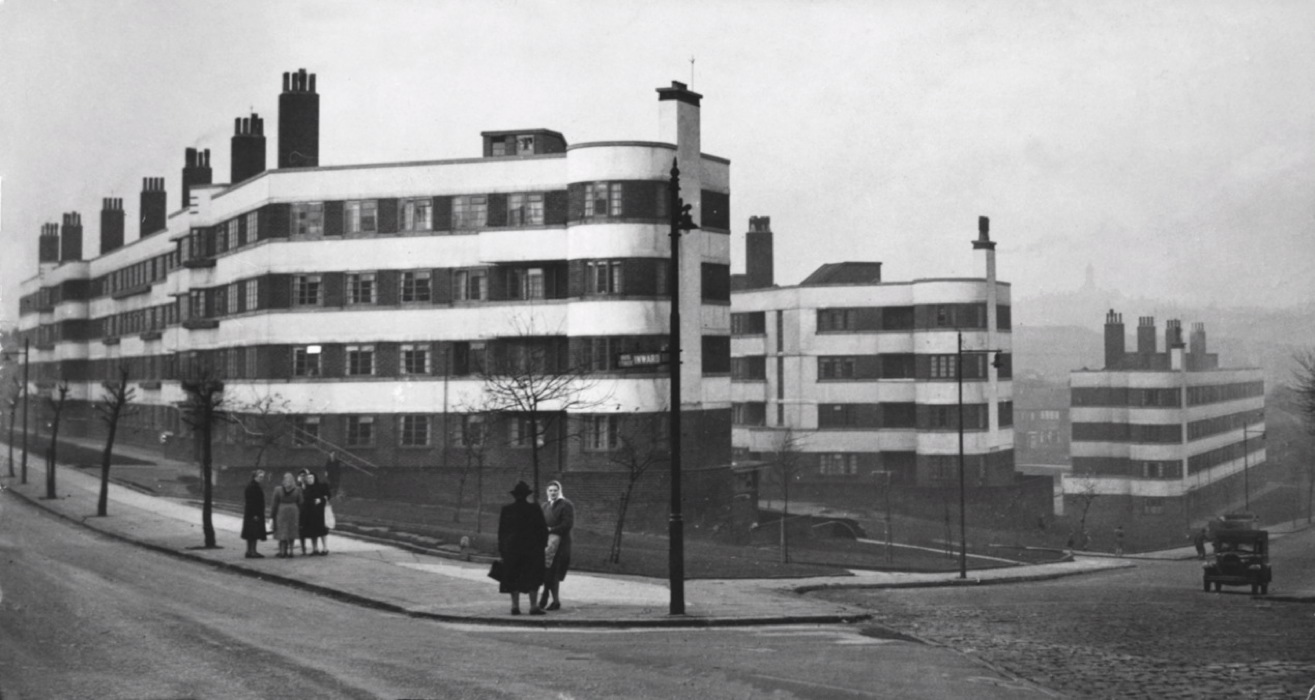Hearths and homes
Legislation paving the way for mass council house building was passed exactly one hundred years ago, improving quality of life for millions
“It was really wonderful in 1951 to get a well looked after council home that we could turn into a comfortable place to raise a family,” says Bill May, aged 93.
The Teessider had joined the Royal Navy in 1944 and saw action on the battleship HMS Nelson, the flagship in the British Far Eastern Fleet.
After leaving the navy in 1951, Bill and his wife Marjorie privately rented a wooden bungalow. But they, like millions, wanted somewhere better.
“We went to Hambleton Council offices and put our name on the housing list. Within weeks we received news that one of the houses newly built by the council was ours. We collected the keys and moved in. It had three bedrooms, a sitting room, radiators throughout, a kitchen and a garden. We were elated and felt very positive about the future as we now had a permanent place to call home,” says a smiling Bill, who remained a council tenant with Marjorie until 1986 when they bought a Harrogate flat.
Record numbers of council homes were built in the first half of the 1950s. The Conservative Party was in government but all parties were committed to a mass public housing building programme where, to quote Nye Bevan, the Labour minister of housing and health after the war, “the working man, the doctor and the clergyman will live in close proximity to one another”.
Politicians guaranteed that once the conflict ended there would be major social improvements
It was amidst the carnage of the first World War and the 1917 Russian revolution, which appeared to put the working class in control, that all politicians were forced to guarantee that once the conflict ended there would be major social improvements. Liberal prime minister Lloyd George promised that returning soldiers would have “homes fit for heroes”. Instead of overcrowded, insanitary accommodation there would be good quality homes that would form the cornerstone of a higher living standard for all. Meanwhile, changes to election law gave the vote to all men aged over 21 and women over 30 who met minimum property qualifications. Voters wanted radical change.
The newly elected Conservative government introduced the Addison Act in 1919, paving the way for large-scale council house building. Under it, 213,000 of the originally promised half a million new homes were built. Dr Christoper Addison, like Bevan, held the joint role of housing and health minister as it was believed poor housing was largely responsible for poor health.
The 1924 Wheatley Act, under the first Labour government, was aimed at building more houses with indoor toilets, electricity and gardens. Thanks to subsidies from central government between the two wars local authorities built 1.1 million council homes, an average of 50,000 annually.
These figures were dwarfed after 1945, with an average of 110,000 new council houses constructed annually in the five years up to 1950. Almost double that yearly figure were built over the next five years, when soon after that my just married parents moved into a council house in Peterlee, one of a series of new towns with mixed housing that were specially built after the war. My father would regularly tell me how proud he was to collect the keys as it involved him and my mother both being able to move out of Easington Colliery, where many houses were in a poor state due to heavy pollution from the local mine.
My parents and other council tenants of their era generally had any repairs to their home carried out by their landlord. Having grown up with his five siblings in council housing on the Royds Hall estate in Huddersfield, mason bricklayer Terry Cunliffe later worked for the Huddersfield Corporation Direct Labour Organisation. All property services and repairs were done in house rather than by private contractors.
“I knew from my own experiences of council housing, without which I doubt my mother as a single person could have kept all six of us together, how important they were to working-class people,” says Cunliffe. “Direct Labour Organisation workers wanted to provide good, affordable homes. As trade unionists we managed to negotiate good bonus schemes in the voids [empty homes] section. We worked quickly to refurbish rundown houses as the council then obtained rents from tenants who were usually very pleased to move in and leave behind poor private housing. Some tenants had inside toilets, central heating and shower facilities for the first time. Everyone – tenants, the council and Direct Labour Organisation workers – won out.”
Like many people my parents remained council tenants until, also like millions of others they purchased their council property under Right to Buy.
Right to Buy is best known as Margaret’s Thatcher invention. In fact it was Edward Heath’s government (1970-74) that first introduced the policy. Thatcher was though astute enough to expand it under the Housing Act 1980. It could be argued that on its own terms it is the most successful policy introduced by a government, as it undoubtedly changed the attitudes of many working class voters who would never have previously considered voting Conservative. Discounts were paid from the public purse.

Lifelong Labour voter Allyson Daykin worked for 40 years until 2008 at KP Foods in Rotherham, where she was active in the TGWU trade union. “I recall when Right to Buy was promoted by Thatcher. Once one worker had bought their council house then everyone wanted to follow suit. You’d have people advising each other. Break times would be dominated by conversations of how much discount people were getting. People would be full of their own self-importance because they now owned some property.”
Daykin pointed out to the union members she represented that there would be long-term problems ahead. “I understood that the numbers of newly built council properties was being dramatically reduced and ultimately younger people in the future would struggle to find places to live. I had no impact.”
By the time Thatcher left office at the end of 1990 her government had sold off 1.5 million council houses. With both major parties now committed to Right to Buy sales have continued ever since. Meanwhile the numbers being built continued to tail off until they dropped to just 360 in 2009. In 2016 just 2,000 council homes were built.
Daykin’s concerns have proven correct. Today we have a serious housing crisis. Homelessness is at record levels and house prices are unaffordable for many. Cunliffe’s two children are both decently paid professional workers but neither can afford to buy a house. Private-sector rents are increasing and tenants have no security.
Sheffield housing campaigner Carrie Hedderwick has seen the impact of council house sales on local communities. She worked for Sheffield City Council as an enforcement officer between 2002 and 2014.
“Many private properties needed essential repairs,” she says. “Landlords generally acted when placed under legal pressures. Tenants would plead with us to say their accommodation was unfit for human habitation as this would get them placed on the council housing waiting list.
“I have lived in Sheffield’s East End for 35 years and with many people forced into renting privately then they don’t feel part of the community as they might be evicted at any time. No one knows each other and communities are shattered by the whole housing policy framework.”
Hedderwick was delighted when Sheffield City Council retook control of its 42,000-unit housing stock in March 2013. The council had previously transferred its properties into an arms length management organisation in 2004.
“The problem is that funds for repairs and to build new homes needs massively increasing by the government,” says Hedderwick.
Recently George Clarke, an ambassador for Shelter, who was brought up on a council estate in Washington new town in Wearside, produced the documentary The Council House Scandal. The architect and TV presenter backed housing campaigners’ demand for 100,000 new council houses a year. Just two million homes remain under council control. Over a million people are on social housing waiting lists.
The current government appears unlikely to back such demands as between 2012 and 2018 it spent £3.5 billion of public money facilitating under Right to Buy the sale of 60,000 homes, at discounts averaging 43 per cent per property, which equates to £61,180 each. The Conservatives have also piloted schemes to allow housing associations to sell off their properties under Right to Buy, to which they remain committed, according to their manifesto. Despite ministers’ promises that all the homes sold will be replaced, just one new property is being built for every five sold off.
Delegates at Labour’s annual conference passed a resolution calling for 155,000 homes for social rent to be built annually under a Labour government. In the end, its manifesto promises £75 billion will be earmarked over five years to build 100,000 council houses a year, and 50,000 social homes from housing associations. But there would undoubtedly be practical problems in implementing such policies as very few councils currently have the expertise to organise large house building programmes.
Labour’s manifesto also promises an end to Right to Buy, but it does not commit to giving councils the ability to take over housing associations – which was a motion passed at its conference.
The Lib Dems have promised to build 100,000 homes for social rent, while the Conservatives have repeated a previous pledge to publish a social housing white paper. But it will not use public money to build houses, believing instead in stimulus for the private sector.
But Cunliffe, Daykin, Hedderwick and May remain united in wanting to see the end of Right to Buy and start a massive council house building programme. “The divide between people across society is growing worryingly large,” says May. “We must address a situation where many people are unable to afford decent housing. Council housing provided for my generation the bedrock of a good upbringing and it can do so again in the future.”
